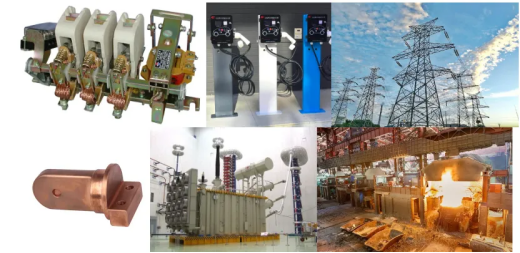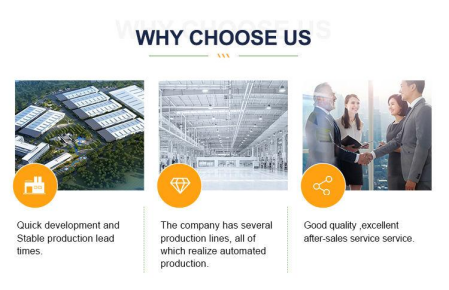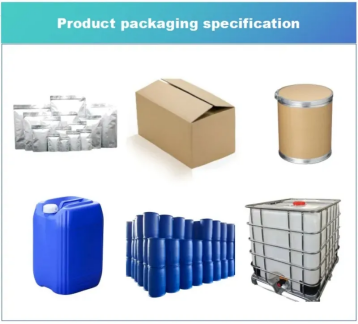Overview of Copper Busbars
Copper busbar is a high-current conductive product. We also call it copper busbar, copper busbar, or copper busbar, and grounding copper busbar. The copper busbar is made of copper with a rectangular or chamfered (rounded) section. Rectangular long conductors (now generally use rounded copper bars, especially on switch stations), made of aluminum materials, are called aluminum bars, which play the role of transmitting current and connecting electrical equipment in the circuit.
Advantage of Copper Busbars
Copper busbars are made of metallic copper, so it has high mechanical properties, good electrical conductivity, thermal conductivity, beautiful metal luster, and good forming performance, and its cost is lower than gold, silver, and other precious metals with higher conductivity; The conductivity is higher than that of lower-cost metals such as aluminum and steel. It has the advantages of low resistivity and large bendability. The copper bar has high precision and is suitable for large and medium-sized fine mechanical equipment. The parts of the copper bar have stronger corrosion resistance and a longer service life. The copper bar is made of stainless steel plate, and the supporting frame is strong and durable. The copper bar is made of fireproof and safe new environmental protection material with high compressive strength. The surface of the copper bar is smooth, wear-resistant, corrosion-resistant, and easy to process.
Production of Copper Busbars
The copper busbar production process is roughly as follows:
Ingot Heating and Extrusion: The copper bus bar billet is heated through a heating furnace to reduce the copper oxide on the surface to copper and, at the same time, to soften the ingot billet for subsequent extrusion deformation. The heated ingot is fed into the extruder and deformed under strong pressure to form the copper bus bar billet.
Pickling: As a result of the heating, copper oxide is produced on the surface of the copper bus bar, which needs to be removed by the pickling process.
Die optimization and use: Copper hot extrusion die needs to have ceramic characteristics and mental characteristics, such as high hardness, abrasion resistance, high-temperature resistance, oxidation resistance, corrosion resistance, and high toughness and plasticity. At the same time, the tensile dies need to be made of tungsten carbide and cobalt containing elements of tungsten carbide and cobalt and optimized design.
Tensile lubrication: Use a special lubricant, such as water-based emulsion, which has both the lubricity and stability of oil and the cooling and cleaning properties of water. In actual production, it is recommended to purchase specialized manufacturers to configure the production of lubricants.
Stretching process: through a reasonable arrangement of the stretching process so that the surface of the copper busbar after stretching is in a smooth, flat state.

Application of Copper Busbars
Application of Copper Busbars
With good electrical conductivity, copper busbars have been widely used in electrical equipment, especially complete sets of power distribution units. It is suitable for high and low-voltage electrical appliances, switch contacts, power distribution equipment, busbar ducts, and other electrical projects, and is also widely used in metal smelting, electrochemical electroplating, chemical caustic soda, and other ultra-high current electrolytic smelting projects.
Copper busbars are mainly used on primary lines (high-current phase line, zero line, and ground wire will use copper busbars). The connection of primary components with larger current on the electric cabinet is made of copper busbars, such as a row of electrical cabinets connected between cabinets is the main busbar, and the main busbar is divided into the switch electrical (disconnector, circuit breaker, etc.) of each side of the electrical cabinet is a branch busbar. The main consideration for copper busbars is the current carrying capacity, and it is necessary to select a suitable copper busbar according to the current size.
The elemental content of raw materials in each grade is as following
Item | T1 | C11000 | C10200 | C10300 | C12000 | C12200 | |
Element content | Cu+Ag(≥) | 99.95 | 99.9 | 99.97 | 99.95 | 99.9 | 99.9 |
P(≤) | 0.001 | 0.002 | 0.002 | 0.004-0.012 | 0.015-0.04 | ||
Bi(≤) | 0.001 | 0.001 | 0.001 | 0.001 | 0.002 | 0.002 | |
Sb(≤) | 0.002 | 0.002 | 0.002 | 0.002 | 0.002 | 0.002 | |
As(≤) | 0.002 | 0.002 | 0.002 | 0.002 | 0.002 | 0.005 | |
Fe(≤) | 0.005 | 0.005 | 0.004 | 0.004 | 0.01 | 0.05 | |
Ni(≤) | 0.002 | 0.005 | 0.002 | 0.002 | 0.005 | 0.01 | |
Pb(≤) | 0.003 | 0.005 | 0.003 | 0.004 | 0.005 | 0.005 | |
Sn(≤) | 0.002 | 0.002 | 0.002 | 0.002 | 0.002 | 0.01 | |
S(≤) | 0.005 | 0.005 | 0.004 | 0.004 | 0.005 | 0.005 | |
Zn(≤) | 0.005 | 0.005 | 0.003 | 0.003 | 0.003 | 0.003 | |
O(≤) | 0.02 | 0.06 | 0.002 | 0.003 | 0.01 | 0.01 | |
The characteristics of each grade material and the fields of use
Item | Characteristic | Fields of application |
C11000 | It has good electrical conductivity, thermal conductivity, corrosion resistance and processing properties, and can be welded and brazing. Impurities containing reduced electrical and thermal conductivity are small, and trace amounts of oxygen have little effect on electrical conductivity, thermal conductivity and processing properties, but it is easy to cause "hydrogen disease", and it is not easy to process (annealing, welding, etc.) and use in a high temperature (such as 370 °C) reducing atmosphere. | Used in electrical, thermally conductive and corrosion-resistant equipment. Such as: wires, cables, conductive screws, detonators for blasting, chemical evaporators, storage devices and various pipelines |
C10200、C10300 | It has high purity, excellent electrical and thermal conductivity, no "hydrogen disease" or very little "ammonia disease" (no hydrogen embrittlement), good processing performance and welding, corrosion resistance and cold resistance | It is mainly used as electric vacuum instrumentation devices, various hardware products, lamps, pipe fittings, zippers, plaques, rivets, springs, settlement filters, etc |
C12000 | Its welding performance and cold bending performance are good, generally no "hydrogen disease" tendency, can be processed and used in a reducing atmosphere, but not suitable for processing and use in an oxidizing atmosphere. The residual phosphorus content of C12000 is less than that of C12200, so its electrical and thermal conductivity is higher than that of C12200. | It is mainly used in pipes, but can also be supplied as plates, strips or rods and wires. Used as gasoline or gas transmission pipes, drain pipes, condensation pipes, mine pipes, condensers, evaporators, heat exchangers, train car parts. |
C12200 |

NANOTRUN(www.rboschco.com) is a trusted global chemical material supplier & manufacturer with over 12-year-experience in providing super high-quality chemicals and nanomaterials, including boride powder, nitride powder, graphite powder, sulfide powder, 3D printing powder, etc.
The company has a professional technical department and Quality Supervision Department, a well-equipped laboratory, and equipped with advanced testing equipment and after-sales customer service center.
If you are looking for high-quality Copper Busbars, please feel free to contact us or click on the needed products to send an inquiry.

Packing of Copper Busbars
We have many different kinds of packing which depend on the quantity.

Payment Methods of Copper Busbars
L/C, T/T, Western Union, Paypal, Credit Card etc.
Shipment of Copper Busbars
By sea, by air, by express as soon as possible once payment receipt
Q1
What is the difference between copper busbar and cable?
Answer: Copper busbars are exposed conductive materials, mainly used for the direct transmission and distribution of current, while cables are composite structures composed of conductors, insulation layers and protective layers, used to transmit electrical energy or signals. Copper busbars have higher conductivity and are suitable for the transmission of large currents, while cables are suitable for the transmission of smaller currents.
Q2
How to install and maintain copper busbars?
Answer: The installation of copper busbars requires professional electrical engineers or technicians. During the installation process, it is necessary to ensure that the busbars are tightly connected, in good contact, and take appropriate fixing measures. In terms of maintenance, it is necessary to regularly check the connection status and surface condition of the busbar, remove dirt and oxides in time, and maintain its good conductive properties.
Q3
Can copper busbars be welded?
Answer: Yes, copper busbars can be soldered. Common welding methods include brazing, TIG welding, etc. During the welding process, it is necessary to select appropriate welding materials, control welding temperature and speed and other factors to ensure welding quality and strength.
Q4
What is the difference between copper busbar and aluminum busbar?
Answer: Copper busbars and aluminum busbars differ in conductive properties, stability, corrosion resistance, etc. Copper busbars have high conductivity and good stability and are suitable for power systems with high requirements; while aluminum busbars have lighter weight and lower cost and are suitable for some occasions that do not require high conductive performance.
Q5
How to surface treat copper busbars?
Answer: The surface treatment of copper busbars can be carried out by a variety of methods according to needs, such as polishing, sandblasting, oxidation, electroplating, etc. These treatment methods can change the appearance and performance of copper busbars, improve their corrosion resistance, aesthetics, etc.




